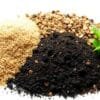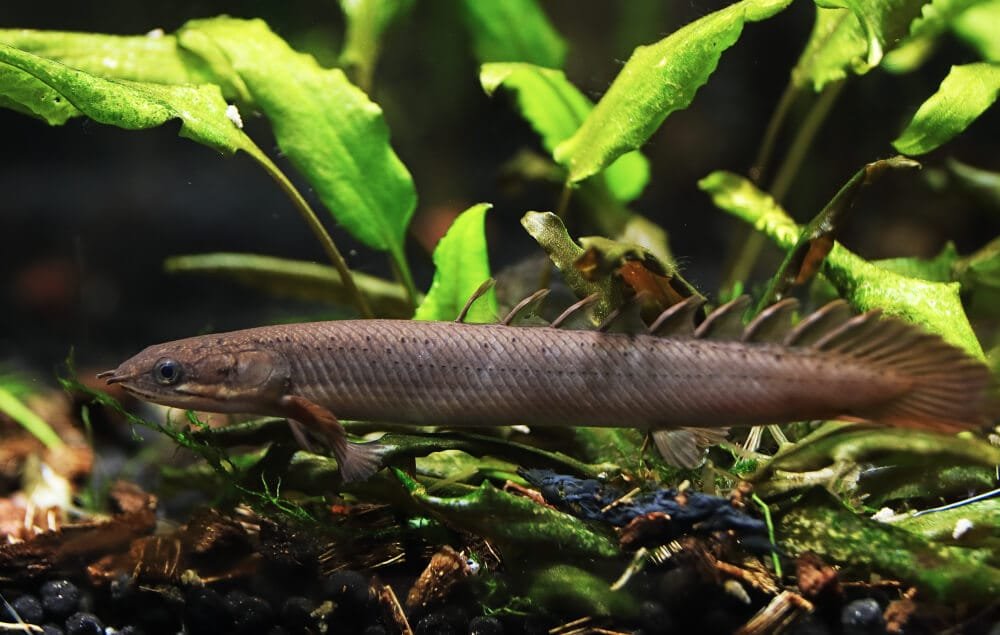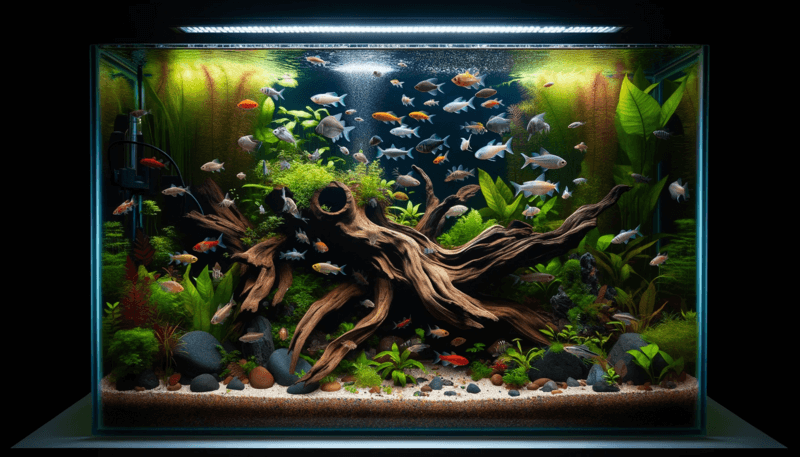Imagine having a mesmerizing miniature world thriving right in front of your eyes – a self-sustaining ecosystem enclosed in the confines of your tank. From colorful fish gracefully gliding through the water to lush, vibrant plants providing oxygen, it seems like a dream come true. But is it really possible to create a self-sustaining ecosystem in your tank? Let’s explore the wonders of nature’s equilibrium and the fascinating journey of balancing the delicate ecosystem within the walls of your aquarium.
Benefits of a Self-sustaining Ecosystem
Reduced Maintenance
Creating a self-sustaining ecosystem in your tank can significantly reduce the amount of maintenance required. With the right balance of plants, invertebrates, and fish, the ecosystem can take care of itself to a large extent. The plants produce oxygen and remove excess nutrients, while the invertebrates help break down organic waste. This means you’ll spend less time cleaning the tank and more time enjoying the beauty of your aquatic oasis.
Natural Balance
A self-sustaining ecosystem strives for natural balance. By carefully selecting the right combination of plants, fish, and invertebrates, you can create an environment where each organism plays a vital role in maintaining the equilibrium. The plants provide shelter and food for the fish, while the fish produce waste that serves as a nutrient source for the plants. Invertebrates, such as snails and shrimp, help keep the tank clean by consuming algae and decaying matter. This natural balance promotes the overall health and well-being of the ecosystem.
Enhanced Aesthetics
One of the most appealing aspects of a self-sustaining ecosystem is the enhanced aesthetics it brings to your tank. By incorporating a variety of aquatic plants, such as Anubias, Java Fern, and Hornwort, you can create a visually stunning underwater landscape. These plants not only add vibrant colors and interesting textures to your tank, but they also provide a natural habitat for your fish and invertebrates. The lush greenery and the intricate root systems create a captivating and serene environment that will mesmerize both you and your guests.
Choosing the Right Tank
Size and Shape
When it comes to creating a self-sustaining ecosystem, the size and shape of your tank play a crucial role. The larger the tank, the more stable the environment, as it provides a larger volume of water to dilute any fluctuations in water parameters. A rectangular or square-shaped tank is generally recommended, as it offers more surface area for gas exchange and better water circulation.
Lighting Requirements
Proper lighting is essential for the growth of aquatic plants in a self-sustaining ecosystem. Most aquatic plants require moderate to high levels of light to photosynthesize effectively. Consider investing in full-spectrum LED lights that mimic natural sunlight. These lights not only promote plant growth but also enhance the overall appearance of your tank by highlighting the colors of the fish and plants.
Filtration System
Choosing the right filtration system is crucial for maintaining water quality in your self-sustaining ecosystem. A combination of mechanical, biological, and chemical filtration is recommended to effectively remove waste, excess nutrients, and toxins from the water. Consider using a canister filter or a sump system for efficient filtration. Additionally, incorporating a protein skimmer can help remove organic matter and improve water clarity.
Selecting the Ideal Substrate
Types of Substrates
The substrate you choose for your tank can greatly impact the health and growth of your aquatic plants. Several types of substrates are available, including gravel, sand, and specialized plant substrates. Gravel is a popular choice as it provides stability for plant roots and allows for water circulation. Sand, on the other hand, can create a more natural and aesthetically pleasing look. Specialized plant substrates contain essential nutrients that promote plant growth and can be particularly beneficial for a self-sustaining ecosystem.
Considerations for Plants
When selecting a substrate, consider the specific needs of your aquatic plants. Some plants may require a nutrient-rich substrate, while others may prefer a coarser material for root anchorage. Research the requirements of the plants you plan to include in your ecosystem and choose a substrate that meets their needs.
Considerations for Invertebrates
Invertebrates, such as snails and shrimp, also benefit from a suitable substrate. They often rely on the substrate for foraging and burrowing activities. A fine-grained substrate, like sand, can provide a more natural environment for these organisms. Avoid sharp-edged or abrasive substrates that may harm delicate invertebrates.
Essential Aquatic Plants
Anubias
Anubias is a popular choice among aquarium enthusiasts due to its hardy nature and low maintenance requirements. This plant thrives in a variety of water conditions and can tolerate low light levels. Anubias can be attached to rocks or driftwood, making it a versatile choice for creating visually appealing aquascapes in your self-sustaining ecosystem.
Java Fern
Java Fern is another excellent option for a self-sustaining ecosystem. Its lush, green leaves create a beautiful contrast against other plants and decorative elements in the tank. Java Fern is known for its ability to survive in low-light conditions, making it ideal for beginners. This plant can be tied to rocks or driftwood, adding a natural touch to your tank.
Hornwort
Hornwort is a fast-growing plant that can provide numerous benefits to your self-sustaining ecosystem. Its dense foliage provides ample hiding places for fish and invertebrates, while also absorbing excess nutrients in the water. Hornwort helps maintain water clarity and oxygenates the tank, promoting a healthy environment for all inhabitants.
Inclusion of Live Rock
Benefits of Live Rock
Live rock, typically composed of coral skeletons, plays a crucial role in creating a self-sustaining ecosystem. It provides a natural and aesthetically pleasing structure for both fish and invertebrates. Live rock also serves as a biological filtration system, harboring beneficial bacteria that break down organic waste. Additionally, it can buffer pH and maintain stable water chemistry.
Curing Live Rock
Before introducing live rock into your tank, it is important to cure it properly. This process involves soaking the rock in saltwater and allowing any remaining organic matter to decompose. Curing live rock can take several weeks, but it is essential to prevent unwanted toxins from leaching into your ecosystem.
Arranging Live Rock
When placing live rock in your tank, consider creating caves, crevices, and ledges to provide hiding places for fish and invertebrates. This mimics their natural habitat and helps reduce stress. Arrange the live rock in a way that promotes water circulation and allows for sufficient light penetration to reach the plants.
Choosing Compatible Fish
Community Fish
When selecting fish for your self-sustaining ecosystem, it is important to choose species that are compatible with each other. Community fish, such as tetras, swordtails, and guppies, are often a popular choice. These fish tend to be peaceful and can coexist harmoniously in the same tank. They add color, movement, and social interaction to your ecosystem, creating a lively and engaging environment.
Algae Eaters
Including algae eaters in your self-sustaining ecosystem can help control unwanted algae growth. Species like Siamese algae eaters, otocinclus catfish, and plecos are known for their ability to consume algae. They play a vital role in maintaining water clarity and preventing algae from overpowering your tank. However, it is important to ensure that these algae eaters have enough food sources and suitable hiding spots.
Bottom Dwellers
Bottom-dwelling fish, such as Corydoras catfish and loaches, help clean the substrate by consuming leftover food and decaying matter. These fish are particularly beneficial in a self-sustaining ecosystem, as they contribute to the overall cleanliness and health of the tank. Their unique behaviors and distinct appearances add diversity and interest to your underwater world.
Introducing Invertebrates
Snails
Snails are valuable additions to a self-sustaining ecosystem. They play a crucial role in maintaining the cleanliness of the tank by consuming excess food and detritus. Additionally, snails help aerate the substrate and break down organic waste, contributing to the nutrient cycle. Popular snail species include Malaysian trumpet snails and Nerite snails, known for their efficient algae consumption.
Shrimp
Shrimp can add a touch of elegance to your self-sustaining ecosystem, with their vibrant colors and graceful movements. These invertebrates help clean the tank by consuming algae and decaying matter. Cherry shrimp and Amano shrimp are popular choices among aquarium enthusiasts due to their hardiness and compatibility with other tank inhabitants.
Crabs
If you’re looking to add some unique inhabitants to your self-sustaining ecosystem, consider introducing crabs. While some crab species can be aggressive or destructive, certain types, like the Red Claw Crab and Thai Micro Crab, can thrive in a community tank setting. These crabs lend a captivating visual appeal and contribute to the overall diversity of your ecosystem.
Maintaining Water Quality
Monitoring Ammonia, Nitrite, and Nitrate Levels
Regularly monitoring ammonia, nitrite, and nitrate levels is crucial for the health of your self-sustaining ecosystem. These compounds can accumulate over time and become toxic to the tank inhabitants. Use a reliable water testing kit to measure these parameters and take appropriate actions, such as water changes or adjusting feeding habits, to maintain optimal levels.
Performing Regular Water Changes
Water changes are an essential part of maintaining water quality in a self-sustaining ecosystem. Regularly removing a portion of the water helps dilute accumulated waste products and maintain stable water chemistry. Aim for a 10-20% water change every 2-4 weeks, depending on the specific needs of your tank.
Balancing pH and Hardness Levels
Monitoring and balancing pH and hardness levels are essential for the overall well-being of your self-sustaining ecosystem. Certain plants, fish, and invertebrates have specific preferences for pH and hardness parameters. Ensure that these levels remain within the acceptable range for your chosen species, and make necessary adjustments using appropriate water conditioners or natural additives.
Feeding and Nutrition
Establishing a Feeding Schedule
Establishing a regular feeding schedule is vital for the health and growth of your self-sustaining ecosystem. Overfeeding can lead to water quality issues, while underfeeding can result in malnutrition. Feed your fish small, controlled portions of high-quality fish food once or twice a day. Observe their feeding habits and adjust the amount accordingly to prevent leftover food from accumulating in the tank.
Types of Fish Food
Offer a varied diet to the fish in your self-sustaining ecosystem. Provide a combination of dry flakes or pellets, frozen or live foods, and vegetable matter. This ensures that your fish receive a balanced and nutritious diet that meets their specific nutritional requirements. Consider supplementing their diet with spirulina or algae-based foods to promote vibrant colors and optimal health.
Supplemental Feeding for Invertebrates
While many invertebrates in a self-sustaining ecosystem can sustain themselves by foraging and consuming algae and decaying matter, some may benefit from supplemental feeding. Offer specialized food, such as sinking pellets or algae wafers, to ensure their nutritional needs are met. Be cautious not to overfeed, as excess food can contribute to water quality issues.
Conclusion
Creating a self-sustaining ecosystem in your tank can be a rewarding and visually stunning experience. By carefully selecting the right tank, substrate, plants, fish, and invertebrates, you can establish a natural and balanced environment that requires minimal maintenance. Enjoy the beauty of your underwater oasis while delighting in the knowledge that you have created a harmonious ecosystem that can thrive for years to come.




